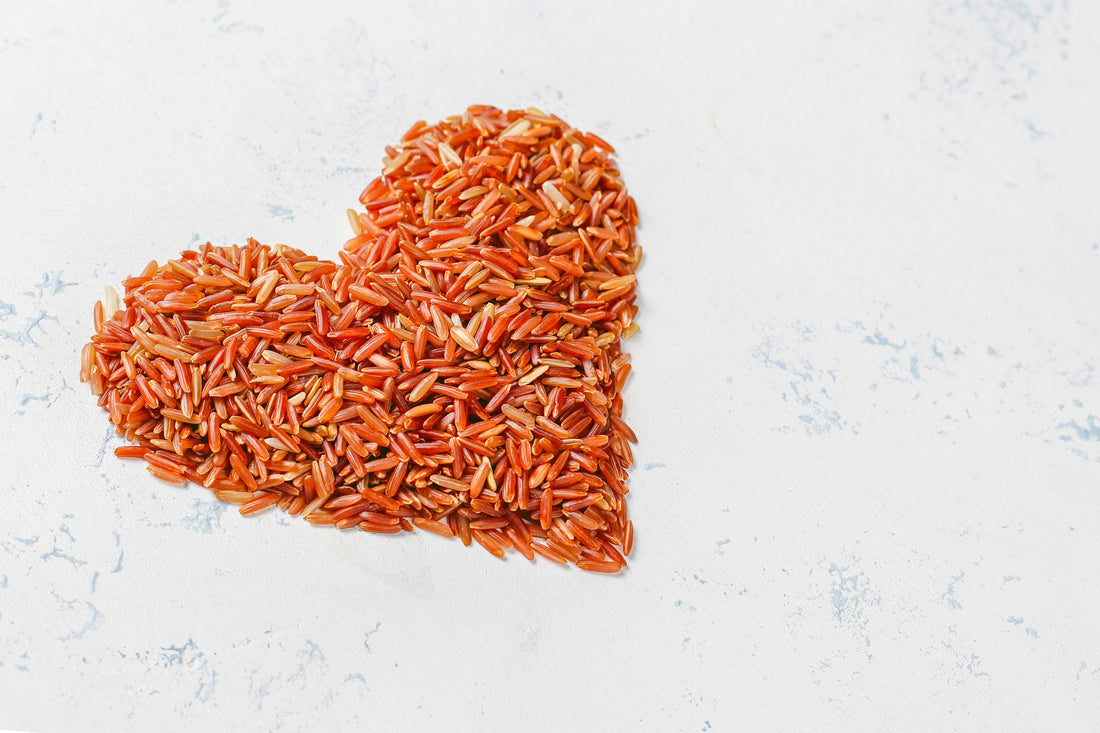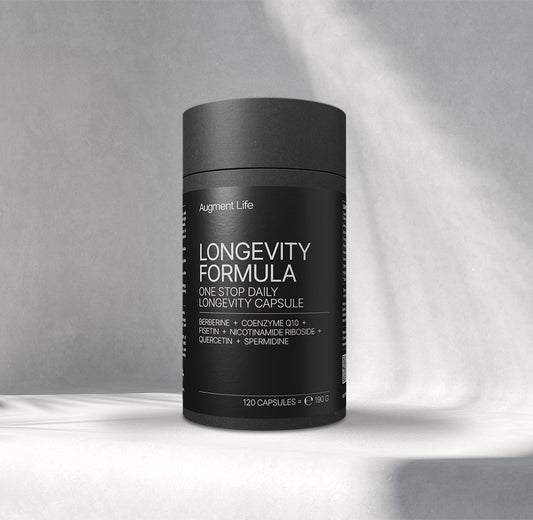Il riso rosso fermentato è un ingrediente che è stato utilizzato tradizionalmente per centinaia di anni nella medicina cinese ed è ora ben noto per la sua capacità di abbassare naturalmente i livelli di colesterolo.
Viene prodotto tramite un processo di fermentazione che utilizza riso e uno specifico ceppo di lievito (Monascus purpureus) che genera composti noti come monacoline.1 La monacolina K, presente nel riso rosso fermentato, è lo stesso principio attivo presente nelle statine da prescrizione, il gruppo di farmaci che abbassano il colesterolo.
Oggigiorno, molte persone sono interessate al riso rosso fermentato per la sua origine completamente naturale e per la sua somiglianza negli effetti con le statine. Se si desidera gestire i propri livelli di colesterolo senza prescrizione medica, usare il riso rosso fermentato sembrerebbe essere una buona opzione. Ma è comunque molto importante usare il riso rosso fermentato correttamente affinché ne sia garantita l'efficacia e la sicurezza.
In questo articolo, forniremo una guida al dosaggio basata sulla ricerca clinica e spiegheremo come sono state sviluppate queste dosi. Inoltre, saranno trattati punti importanti da considerare per un uso sicuro.
Continua a leggere per saperne di più.
Dosaggio
Gli integratori di riso rosso fermentato sono ampiamente disponibili sul mercato sotto forma di capsule o compresse.
La maggior parte degli studi e delle aziende farmacologiche utilizzano uno standard di 600 mg due volte al giorno per gli adulti.2-4 Uno studio ha esaminato come il riso rosso fermentato influisce sui pazienti con colesterolo alto. Durante questo studio in doppio cieco controllato con placebo, ai partecipanti sono stati somministrati 1.200 mg al giorno per 12 settimane. I risultati hanno mostrato una significativa riduzione dei livelli di colesterolo LDL, confermando che questo dosaggio aiuta l'integratore a funzionare in modo efficace.3
Un'altra ricerca ha tentato di determinare la sicurezza e l'efficacia a lungo termine del riso rosso fermentato. Per 24 settimane, i partecipanti hanno ricevuto 2.400 mg/giorno suddivisi in due dosi da 1.200 mg ciascuna. La sperimentazione ha dimostrato non solo una sostanziale diminuzione del colesterolo LDL, ma anche un profilo di sicurezza accettabile con pochi effetti avversi.4
La maggior parte dei principali marchi di integratori sul mercato generalmente raccomandano di assumere tra 1.200 e 2.400 mg al giorno, suddivisi in due o tre dosi. Il dosaggio consigliato si basa su studi clinici che hanno dimostrato che il riso rosso fermentato è efficace e sicuro per il controllo dei livelli di colesterolo. Uno studio ha scoperto che l'aggiunta di riso rosso fermentato a 1.200-2.400 mg/giorno ha ridotto significativamente i livelli di colesterolo LDL tra i partecipanti in 12 settimane; in particolare le persone che hanno ricevuto lil dosaggio più alto di questo intervallo. Inoltre, i ricercatori hanno notato che dividere la dose giornaliera totale in due o tre piccole dosi ha aiutato a mantenere livelli ematici più stabili di composti attivi, massimizzando così l'effetto ipolipemizzante e riducendo al minimo i possibili effetti collaterali.5
Tuttavia, ogni marchio utilizza ancora diverse formulazioni per i propri integratori, quindi è altamente consigliato parlare con un medico e fare riferimento alle istruzioni di dosaggio per assumerne la quantità corretta.
Puoi leggere di più sul riso rosso fermentato, i suoi benefici e gli effetti collaterali nel nostro articolo, “Perché Dovresti Assumere Riso Rosso Fermentato?”
Controindicazioni
Il riso rosso fermentato è controindicato con quanto segue:6
- Alcol - La combinazione di alcol e riso rosso fermentato può aumentare il rischio di danni al fegato. Evitare il consumo di alcol quando si assume questo integratore.
- Farmaci immunosoppressori - Immunosoppressori, in particolare quelli che contengono Ciclosporina, poiché possono aumentare il rischio di miopatia o malattie muscolari che controllano i movimenti volontari del corpo.7
- Farmaci per le infezioni fungine - L'assunzione di riso rosso fermentato con questi tipi di farmaci, come l'eritromicina, ha aumentato il rischio di effetti collaterali dannosi del riso rosso fermentato.
- Statine - Poiché è stato scoperto che il riso rosso fermentato ha lo stesso effetto delle statine (farmaci che abbassano il colesterolo), assumerlo con altre statine potrebbe aumentare il rischio di effetti collaterali dannosi.
- Farmaci, erbe e integratori epatotossici - Il riso rosso fermentato potrebbe contenere monacolina K, che può causare danni al fegato in alcune persone. L'assunzione di riso rosso fermentato con questi tipi di farmaci, erbe e integratori potrebbe aumentare il rischio di danni al fegato.
- Niacina o vitamina B3 - L'assunzione di questo integratore con elevate quantità di vitamina B3 può anche aumentare il rischio di miopatia.
- Pompelmo - Il succo di pompelmo può aumentare significativamente i livelli nel sangue e aumentare il rischio di effetti collaterali come danni al fegato.8
- Erba di San Giovanni - Questo prodotto comunemente usato per la depressione può alterare e ridurre gli effetti del riso rosso fermentato, quindi si dovrebbe evitare di assumerli entrambi.3
Riferimenti:
- Riso rosso fermentato. (n.d.). NCCIH. https://www.nccih.nih.gov/health/red-yeast-rice.
- Dosaggio specifico per indicazione (riso rosso fermentato), effetti avversi basati sulla frequenza, interazioni complete, controindicazioni, programmi di gravidanza e allattamento e informazioni sui costi. (n.d.). https://reference.medscape.com/drug/angkak-benikoji-red-yeast-rice-344601.
- Becker, D. J., Gordon, R. Y., Halbert, S. C., French, B., Morris, P. B., & Rader, D. J. (2009). Riso rosso fermentato per la dislipidemia nei pazienti intolleranti alle statine: uno studio randomizzato. Annals of internal medicine, 150(12), 830–W149. https://doi.org/10.7326/0003-4819-150-12-200906160-00006.
- Heber, D., Yip, I., Ashley, J. M., Elashoff, D. A., Elashoff, R. M., & Go, V. L. (1999). Effetti di riduzione del colesterolo di un integratore alimentare brevettato a base di riso rosso fermentato cinese. The American journal of clinical nutrition, 69(2), 231–236. https://doi.org/10.1093/ajcn/69.2.231.
- Gerards, M. C., Terlou, R. J., Yu, H., Koks, C. H., & Gerdes, V. E. (2015). L'agente ipolipemizzante cinese tradizionale, il riso rosso fermentato, determina una significativa riduzione dell'LDL, ma la sicurezza è incerta: una revisione sistematica e una meta-analisi. Atherosclerosis, 240(2), 415–423. https://doi.org/10.1016/j.atherosclerosis.2015.04.004.
- Team, N. (2023, August 17). Riso rosso fermentato | NCH Healthcare System. NCH Healthcare System. https://nchmd.org/health-library/articles/art-20363074/.
- Nagy, H. (2023, August 14). Miopatia. StatPearls - NCBI Bookshelf. https://www.ncbi.nlm.nih.gov/books/NBK562290/.
- Riso rosso fermentato e interazioni tra alcol e cibo. (n.d.). Drugs.com. https://www.drugs.com/food-interactions/red-yeast-rice.html#:~:text=Grapefruit%20juice%20can%20signi





